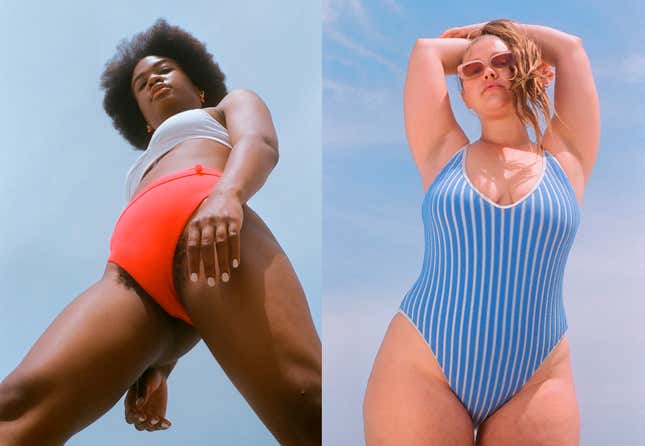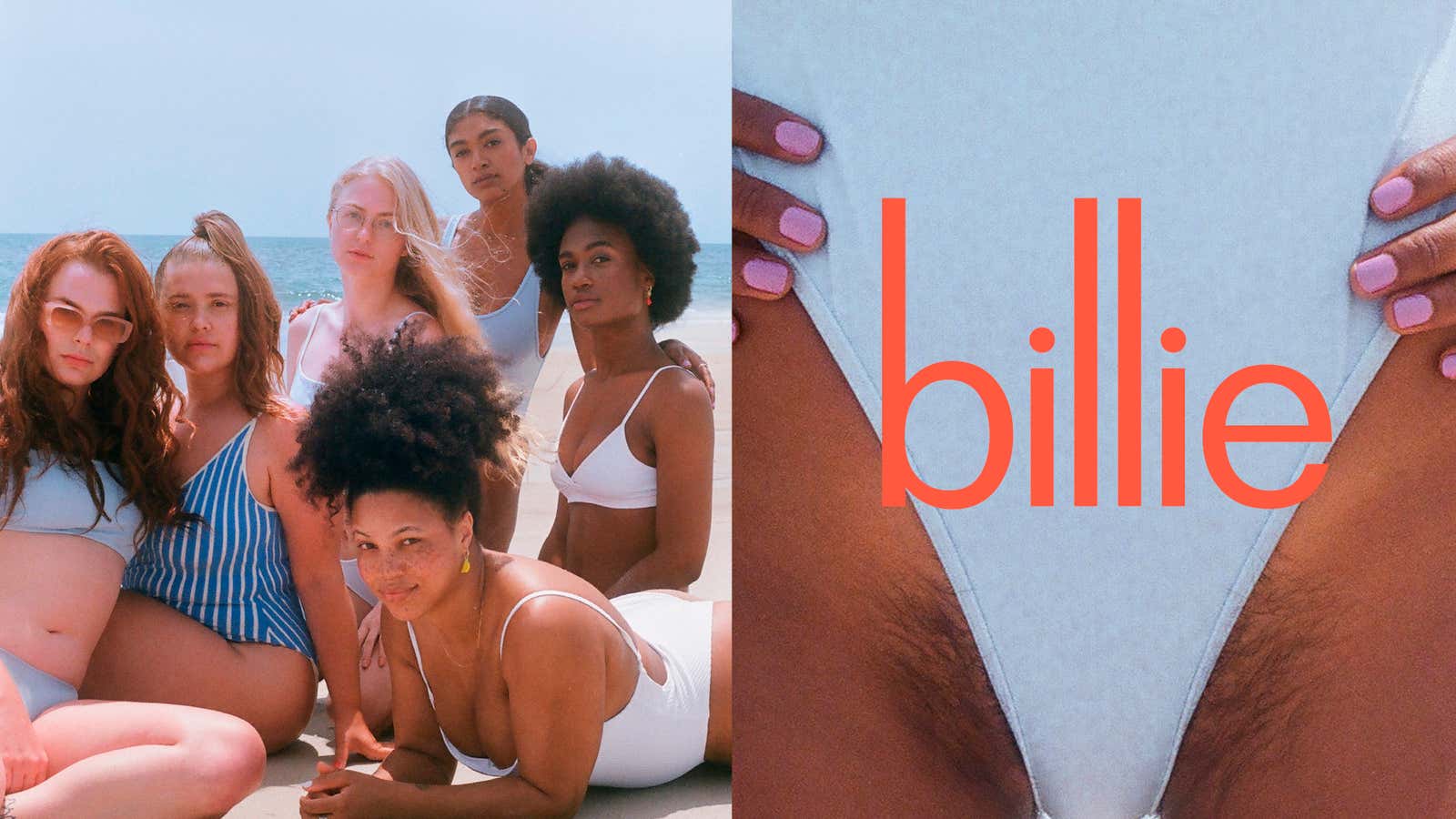Shaving ads for women have traditionally depicted semi-naked ladies joyously caressing their already hairless legs and underarms with razors. In a sharp departure, razor brand Billie is trying something new: ads featuring naturally hairy women.

“Red, White, and You Do You,“ released earlier this month, is the subscription-based company’s second campaign to feature female body hair, a rarity in razor ads. In it, diverse models in swimsuits sport pubic hair in various styles: from fully grown to clean-shaven. The video follows Project Body Hair, a 2018 campaign which featured women with unibrows and underarm hair.
Launched in 2017, Billie delivers a $9 razor and $9 replacement blades via its website. Although available for both men and women to purchase, the start-up bills itself as female-focused, objecting, for example, to the Pink Tax (the upcharge on many women’s personal-care products). It joins the ranks of other direct-to-consumer razor brands which have found success in recent years, including Dollar Shave Club and Harry’s. The latter launched Flamingo, its female-centric razor brand, in 2018.
Billie co-founder and former ad exec Georgina Gooley told Glamour that the company’s goal is to normalize body hair and change the conversation around it: “There has been this shame around body hair, and a lot of that is the shaving category talking about the topic as a problem that needs to be fixed with the product they’re trying to sell.” The message Gooley wants to share with Billie: “Shaving is a choice, not an expectation.”
The aesthetics of female body hair have a long and complicated history. Western women haven’t always shaved or waxed—body hair was a non-issue in the buttoned-up Victorian era. Hairlessness only recently became a social requirement (pdf) thanks to a push by corporations, the media, and the beauty industry, combined with a healthy dose of misogyny. Shaving was never really about self-care—rather, as hemlines got a little higher, it became a requirement of femininity.
In 1915, for example, razor-giant Gillette created what amounted to an anti-armpit hair marketing campaign to sell its inaugural female razor. “Milday Decollete Gillette is welcomed by women everywhere,” the ad read, “now that a feature of good dressing and good grooming is to keep the underarm white and smooth.”
Then they came for the legs. A World War II nylon-shortage led to women going bare-legged more frequently. The razor industry saw an opportunity and pounced—running ads encouraging women to obliterate their leg fuzz.
In response, refusing to shave one’s body, especially the armpits, has become one way for women to make a statement about their autonomy and independence from typical beauty standards. It can also just be a preference.
In recent years, social media has supported a burgeoning pro-body hair movement, with users, including celebrities, embracing such hashtags as #leghairdontcare, #hairywoman, and #bodyhairdontcare (this last one has some 16.4 million posts). Women’s body-hair also got the Fortune 500 green-light in April, when Nike ran an ad with Nigerian-American model Annahstasia Enuk sporting underarm hair:
There’s a certain irony in a company embracing a movement that could essentially make its products obsolete—and given the complicated history of corporate involvement in women’s body hair, there’s reason to be skeptical about whether Billie’s pro-hair approach is sincere, or just pandering. But Billie’s campaigns have been relatively well-received, and investors at least are on board—the company has raised $25 million in Series A funding since its launch.
